Nurturing homegrown vegetables to maturity takes a lot of love and patience – so it’s disappointing when the finished product is bland, bitter, tough, mushy or simply inedible.
Harvesting a delicious crop requires more judgment than any other aspect of growing vegetables. Even seasoned pros sometimes make mistakes with the easiest vegetables, so don’t be too hard on yourself if you miss the optimal harvest time or struggle with technique.
All crops are different and require a specific approach to maturity, harvesting, and storage. Some vegetables can be harvested continuously throughout the growing season – such as cut-and-resprout crops – while others will be harvested in one large batch. Check out our harvesting guide for your specific variety.
Also, always keep your seed packets for reference, as they provide guidance on when to harvest the vegetable, as well as the size at maturity and a reference image of what the vegetable will look like when ripe.
Learn our golden rules for harvesting vegetables, gain experience and soon you will be able to spot a perfectly ripe vegetable and know exactly what to do with it.
1. Know what ripe fruit looks like – and feels like –
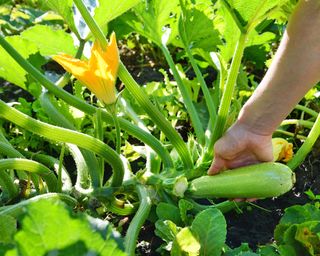
(Image source: Getty Images)
A vegetable will not taste good if it is harvested too early or too late. While you can consult the seed packet for average maturity dates, there is no exact time to harvest a crop – it depends on the gardener’s experience to spot the key signs that the produce is ready.
Some crops need to be harvested when fully ripe, while others are easier to harvest and will continue to ripen after picking. Crops that need to be harvested when ripe include root vegetables, summer squash, sweet corn, eggplant, garlic, zucchini, cucumbers, beans, and peas.
If you are growing a particular vegetable for the first time, it can be difficult to know when it is time to harvest. Here are some checkpoints to make it easier:
- Color. Does the color match the picture on the seed packet? Is it bright and vibrant with a glossy finish? Is the color evenly distributed throughout the fruit? If the color begins to fade or turns yellow or brown, it is likely that the product is overripe.
- Feel. Vegetables, such as tomatoes and peppers, will soften a little when they are ripe. If they feel very firm, they are not quite ripe – but don’t let them get too soft. They should feel heavy and have a nice springy texture. Vegetables tend to get firmer and softer when they are overcooked – thinner vegetables like carrots will become mushy. Beans and peas should feel plump but not swollen.
- Size. Check the mature size of the vegetable listed on the seed packet. Some plants need to grow to full size to taste good, while others can be enjoyed as tender “baby” vegetables – such as beans, beets, carrots, corn, cucumbers and onions. Root vegetables, such as carrots and beets, may start to poke through the soil surface, which means it’s time to harvest.
- Easy to pick. Fruit and legumes are easier to pick when they are ready. Pick a vegetable and see if it comes off the plant easily.
- Leaf. Root vegetables and alliums, such as onions and garlic, grow underground, so the leaves can be the first sign that the plant is ripe. Typically, the leaves will start to turn yellow or brown. Potatoes are not ripe until the leaves have dried out and turned brown, but onions and garlic will be in the early stages of turning. Some vegetables, such as beets and carrots, will retain their bright green leaves, so pay attention to the length of the leaves – they should be long and well developed.
- Taste. Harvest one or two vegetables and taste them – cook them if necessary. If they taste bland and chewy, they’re probably underripe; if they’re sour and too soft, they’re probably overripe. You’ll quickly learn when to harvest your produce.
2. Harvest at the right time – Right weather
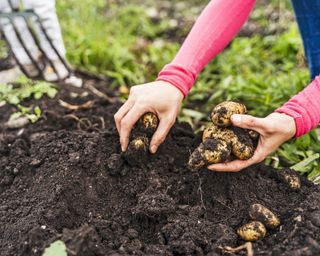
(Image source: Getty Images)
Early morning is the best time to harvest most vegetables, when they are plump, juicy, and crisp from the moisture from the night before.
Do not harvest during the hottest part of the day as the vegetables may wilt and lose flavor.
You should also avoid harvesting vegetables during and immediately after rain. Walking on the ground to reach plants will compact the soil, reducing air pockets and drainage. Additionally, wet vegetable leaves can splash onto other plants during harvest, increasing the risk of disease transmission.
Some crops, such as onions and garlic, are best harvested after a few days of dry weather. If harvested while still wet, they are more susceptible to mold.
If heavy rain is forecast after a dry period, quickly harvest any ripe tomatoes and other soft fruits, as they can absorb water and swell, leading to cracking.
Another reason to harvest during dry weather is to avoid the spread of harmful bacteria. Listeria, in particular, thrives in wet soil and can contaminate low-growing root crops and vegetables. After rainstorms, the bacteria is found in much higher concentrations on crops.
3. Adjust your technique to suit different vegetables.
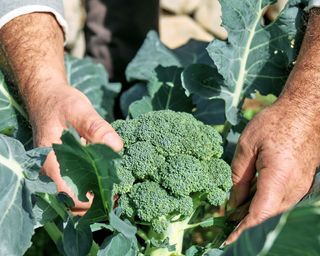
(Image source: Getty Images)
Of course, the ultimate goal when harvesting vegetables is to get them off the plant or out of the ground. However, different crops require different techniques.
All vegetables should be handled as gently as possible to avoid bruising and damage.
- Vegetable The plants should be harvested after loosening the soil around them, to avoid breaking them. Do this with your fingers in loamy soil to minimise damage to the plants, or gently use a fork in firmer soil. The plants should then pull out easily from the soil – if not, dig some more. Trim off excess leaves immediately to avoid moisture loss.
- Vegetables For example, tomatoes and peppers can be harvested by a simple “twist and pull”. However, if they show any resistance, cut the stems with sharp, sterilized hand pruning shears.
- Leafy green vegetables can be harvested whole or ‘cut and regrow’, leaving the core of the plant to continue growing. If harvesting whole, use sharp, sterilized hand pruning shears or a knife to make a clean cut at the base.
- Cabbage It is also advisable to harvest at the base with sharp scissors or pruning shears.
4. Use the right tool for the job

(Image source: Getty Images)
You don’t need a lot of tools to harvest vegetables, but the tools you use must be of good quality to avoid damaging the produce.
- ONE hand or fork digging It is essential to loosen the soil around the vegetables before harvesting, as using a shovel will more likely damage the plants.
- ONE Japanese that is the knife is a great multi-purpose tool that can be used for everything from weeding to harvesting. Use the blade to cut vines or prune them at the base. Or, use the tip for more precision when loosening soil around vegetables.
- Use hand pruning shears to cut vegetables from vines.
- ONE basket It has an ideal handle for holding your harvest as its flexible sides will prevent bruising and help prevent tender vegetables from being crushed when other vegetables are placed on top.
Disinfecting your cutting tools is important to avoid spreading disease between plants. Take a cloth soaked in disinfectant and use it to wipe the cutting blades after each plant is harvested.
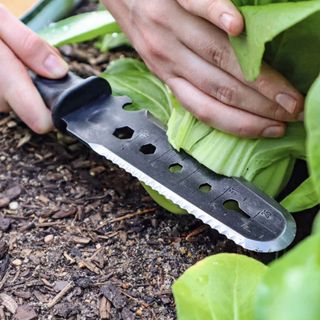
Hori Hori 10 in 1 Vego Garden Knife
Hone your gardening skills with the Hori Hori knife set from Vego Garden. This innovative tool takes a classic knife to the next level with 10 functions and a sturdy carrying case. This is the last garden knife you’ll ever need!
5. Extend your growing season by harvesting little and often.
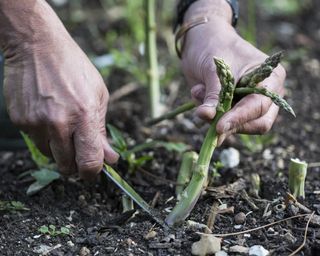
(Image source: Getty Images)
The secret to harvesting vegetables is to avoid over-harvesting – you want to enjoy produce throughout the season. Staggering helps achieve this, planting at different times and combining varieties that ripen at different times. However, there is an art to extending the yield of many crops.
Regular harvesting will boost yields in certain crops, such as beans, peas, tomatoes, and zucchini. Start picking when the vegetables are at their peak, starting with the largest ones, and the plants will continue to produce for weeks.
Beans and peas should be picked every day until they stop producing. Do not leave old bean pods on the plant as this will slow production.
Picking tomato plants regularly also helps them produce a high yield. For the biggest harvest, pick them while they are still slightly green and let them continue to ripen on a warm windowsill indoors.
Zucchini should be picked when they reach 6-8 inches tall and should not be allowed to grow too large as the plants will be slow to grow.
Some crops can be grown cut and regrown, meaning the core of the plant remains and will continue to grow new shoots. Lettuce and greens such as Kale, Swiss ChardAnd broccoli will continue to grow if you only harvest the old outer leaves, leaving the growing middle leaves.
You can harvest the delicious leaves of radish and beets without harming the main plant, as long as you leave some.
Other plants, such as broccoli, will produce a second crop of smaller plants after removing the main head, along with light greens, while kohlrabi will continue to produce tasty foliage.
Leeks will continue to grow if you cut them back about 5cm from the soil surface without disturbing the root system.
6. Dry vegetables before storing
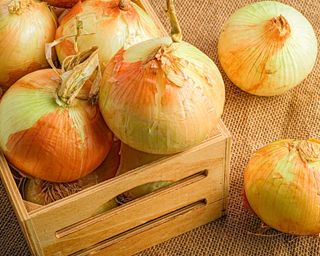
(Image source: Getty Images)
Preserving vegetables is an important skill to learn. Even if you harvest and eat vegetables from your garden every day, you may still have crops that you want to store. Some produce is suitable for freezing, canning, pickling, or drying. However, other crops can be stored for months in a cool basement or garage.
Potatoes, onions, carrots, beets, garlic and turnips are crops that tend to be in surplus and need to be stored properly to extend their shelf life.
Vegetables need to be dry before storing, otherwise they will become moldy. If you plan to eat them right away, you can simply leave them on the counter to dry for a few hours. However, long-term storage requires more effort.
Storing onions involves letting them “pickle” for 2-3 weeks. Dry them indoors, spread out on a clean, dry surface in a single layer until the skins are papery and the necks are dry. Store them in a well-ventilated bin or basket in an unheated basement or garage.
Storing potatoes begins in the ground by reducing watering in the weeks before harvest to harden the skins. Wait until the plants die to ensure ripeness. Brush the potatoes clean of soil, then dry them indoors for 10-14 days. Then store them in paper or burlap bags in a dry, unheated location.
Carrots, beets, and turnips should have their green leaves removed when harvested. Brush off the dirt with a broom and let them dry on a table for a while. They will keep for several weeks in the refrigerator, or for up to several months in a bucket or bin covered with sand. Store them in a cool, unheated room.
Another option is to overwinter carrots and beets in the ground before harvesting.
